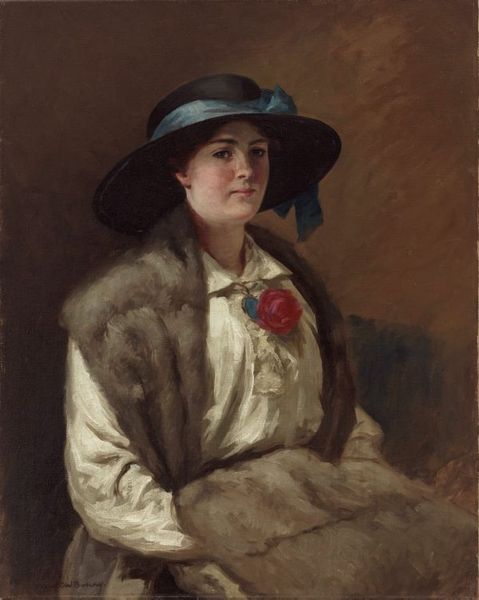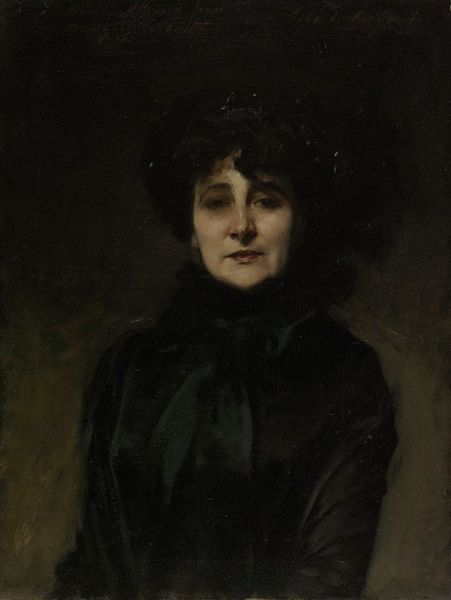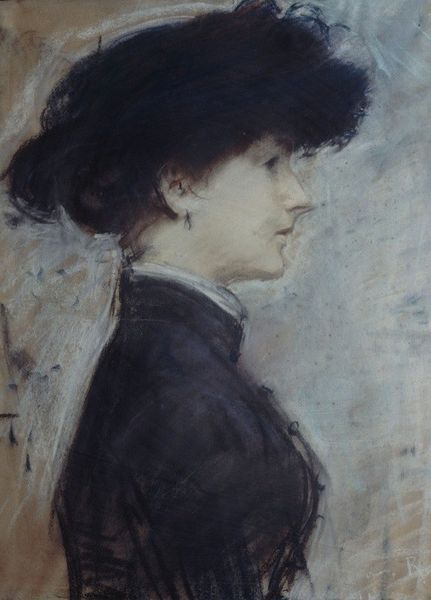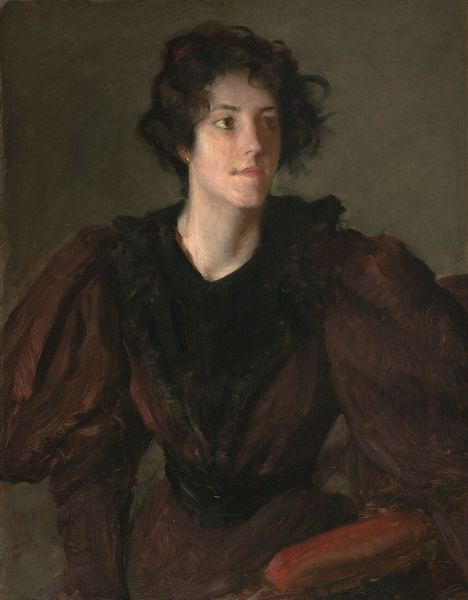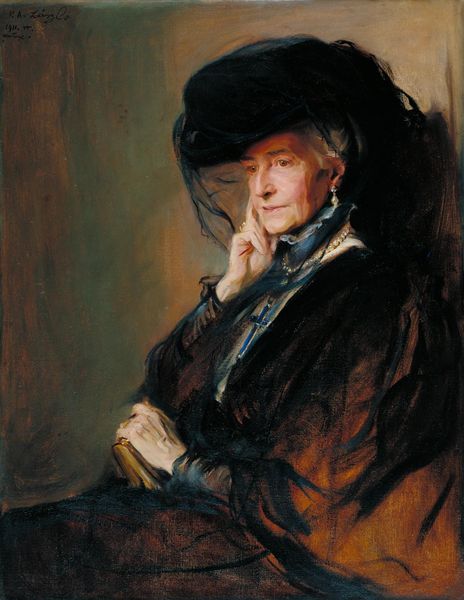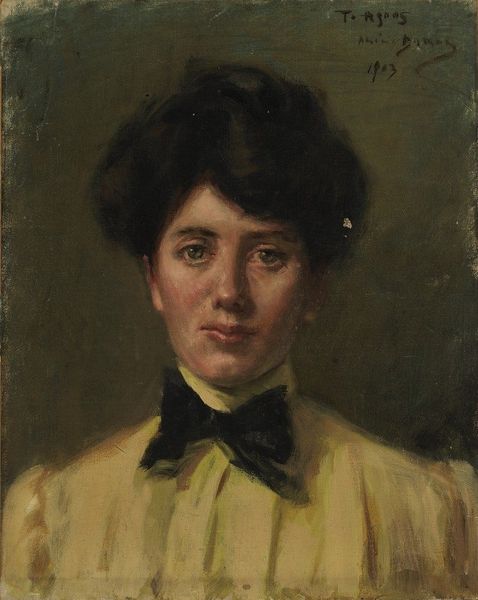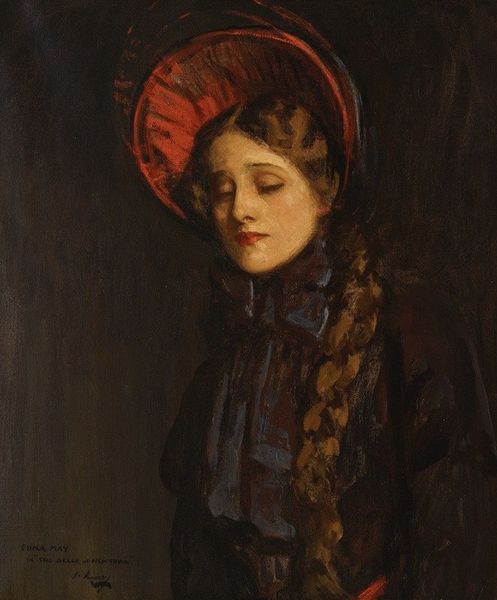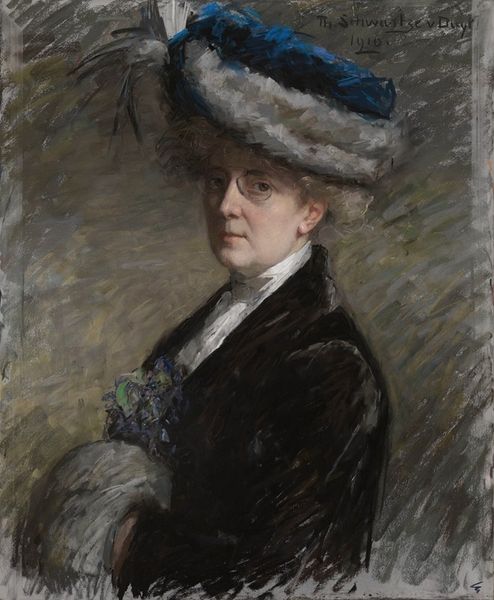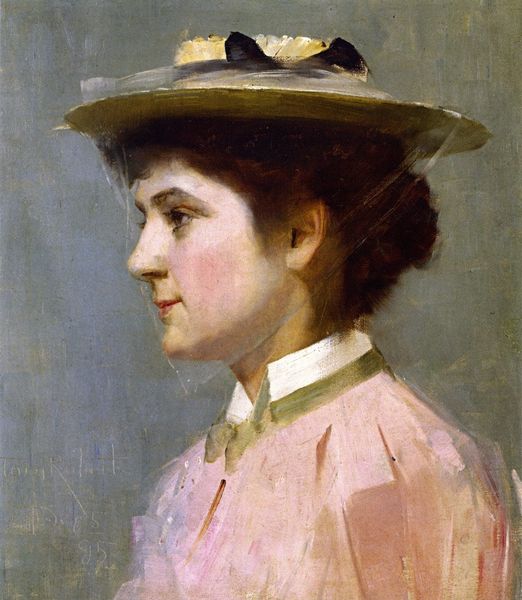
Copyright: Public Domain: Artvee
Curator: Immediately, the muted tones and rather somber expression create a strong sense of Victorian propriety. Editor: Indeed. This is "Mrs Herbert Asquith, later Countess of Oxford and Asquith," painted in 1909 by Philip Alexius de László. The artist certainly captured a moment reflective of the era's aesthetic preferences. Curator: And Mrs. Asquith, later Countess, was a woman of significant influence within political circles. Knowing her social status and active role gives a deeper context to the otherwise understated opulence portrayed. The somewhat translucent fabric hints at a delicate fragility which belies a strength evident in her unwavering gaze. Editor: I see your point, but focusing purely on her societal standing potentially overshadows the clever interplay of light and shadow de László uses. Note how he captures the subtle gradations on the brim of her large hat and her neck. It almost gives it an ethereal, dreamlike quality typical of Impressionist portraits. The color palette and painterly quality give it this distinctive mood and sensation. Curator: The clothing, including the details of her lace collar and the suggestion of her jewelry, reflect the visual codes that define a specific moment for women's fashion and identity in British society. And the imposing hat signifies much about gendered roles within a privileged, highly regulated environment of expectation. Editor: From my perspective, those formal features contribute greatly to how we visually engage with the painting, even today. The artist utilizes compositional elements like line and color to convey not just status but also character. It draws us to analyze the symbolic value embedded within his artistic vocabulary. Curator: Exactly, and it’s vital that the character study goes beyond the immediate formal analysis into deeper meanings: how were women placed, and how did they strategically occupy that positioning? The slightly blurred background hints at an unfixed notion of the feminine in the early twentieth century. Editor: True, it does leave much open to visual and conceptual interpretation, it is so successful in capturing Mrs. Asquith in a fixed, eternal moment, no longer shifting with time. Curator: This artwork stands as more than an impressive portrait. The subject actively participated in social and political worlds, an act that is worth pondering further in terms of representation and agency. Editor: I agree, exploring beyond its structural construction and thinking about historical and gender constructs invites an enhanced critical engagement.
Comments
No comments
Be the first to comment and join the conversation on the ultimate creative platform.

